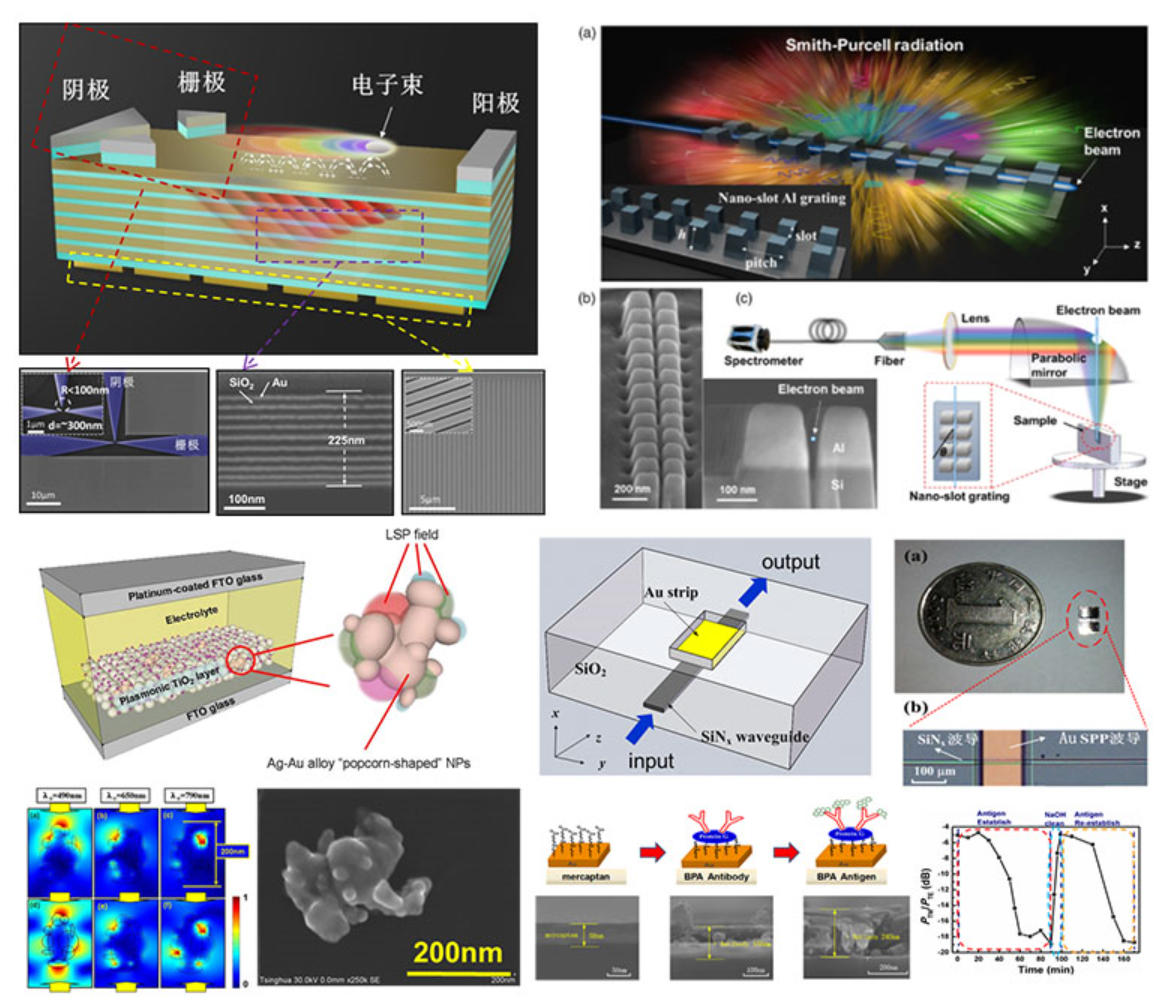Research topics:Free Electron Emission / Plasmonic Devices
Free electron light emission based on micro-&nano-structures
Based on the novel materials and artificial structures, including plasmonic structure, photonic crystal, metamaterials and two-dimensional materials, various optical phenomena are demonstrated. Therefore, the interaction between free electrons and these micro-&nano- structures should result in interesting phenomena of free electron radiation. The features of Cherenkov radiation and Smith-Purcell radiation, such as electron energy threshold, radiation frequency, polarization direction, radiation efficiency and et al, could be manipulated by using different artificial structures, and the integrated on-chip free electron device could be realized.
Integrated plasmonic devices
Surface plasmon polaritons (SPPs) is transverse-magnetic surface electromagnetic excitation that propagates in a wavelike fashion along the interface between metal and dielectric medium. Recently, SPPs have demonstrated lots of special physical characteristics by introducing various nanostructures, which is promising of break the bottleneck of conventional optoelectronic devices. For example, SPPs can greatly enhance the light-matter interaction and the nonlinear effect of optics, which is helpful for high efficiency solar cells and photo-detector; SPPs can greatly compress the wavelength of electromagnetic field for integrated optical circuits, nanolithography and ultra-small molecule sensing.
Research topic
- Cherenkov radiation and Smith-Purcell radiation based on nanostructure
- Free electron THz emission device
- Plasmonic waveguide, hybrid coupler, and integrated biosensor
- Plasmonic nanoparticle enhanced solar cell
- Plasmonic assisted nanolithography

Representative Result
Proposed and realized the integrated Cherenkov radiation emitter eliminating the electron velocity threshold. Demonstrated the low-energy electron excited Cherenkov radiation covering λ0 ≈ 500?900 nm and the first integrated free-electron light source in the world by integrating a planar electron emitter on hyperbolic metamaterial. (Nature Photonics, 11, 289 (2017); Nanophotonics 9, 1491 (2020))
By having electron beam fly through a nano-slot in Al grating, the high-order SPR has been extended to deep ultraviolet and the wavelength covers λ0≈230-1100nm with total output power of tens of nW. And we also investigated numerically the vortex SPR and high-order coherent SPR, which is realized by having free electrons passing on holographic grating and plasmonic structure. (Optica 6, 592 (2019); Photonics Research 8, 1309 (2020))
Proposed and realized an integrated sensor based on the vertical hybrid coupler composed of a short range surface plasmon polariton (SRSPP) waveguide and a SiNx dielectric waveguide. The sensor is applied to detect a 5 nm-thick variation of detection layer with thickness detection sensitivity as high as 0.67 dB/nm and applied for detecting the Bisphenol A with minimum detectable concentration about 0.1ng/ml. (Appl. Phys. Lett. 100, 111108 (2012); Appl. Phys. Lett. 102, 061109 (2013); Sensors and Actuators B: Chemical, 186, 495 (2013))
The Au-Ag alloy popcorn-shaped nanoparticles are used to enhance the light absorption of dye-sensitized solar cells (DSCs). The power conversion efficiency (PCE) of DSCs is enhanced by by 32% from 5.94% to 7.85%, which results from the excitation of the localized surface plasmon mode on the popcorn nanoparticles. (Scientific reports 3, 2112 (2013); RSC Adv., 5, 11175-11179 (2015))

